
Camera body disassembly: opening the outer camera case. Remove screws around the back of the camera body and prop open the camera. The back of the camera body (where the viewing screen is) comes out.
 |
Image 2 View of the back of the camera. There are several small connectors which need to be diconnected. Most of the connectors have a small hinge which is lifted to free the connector. |
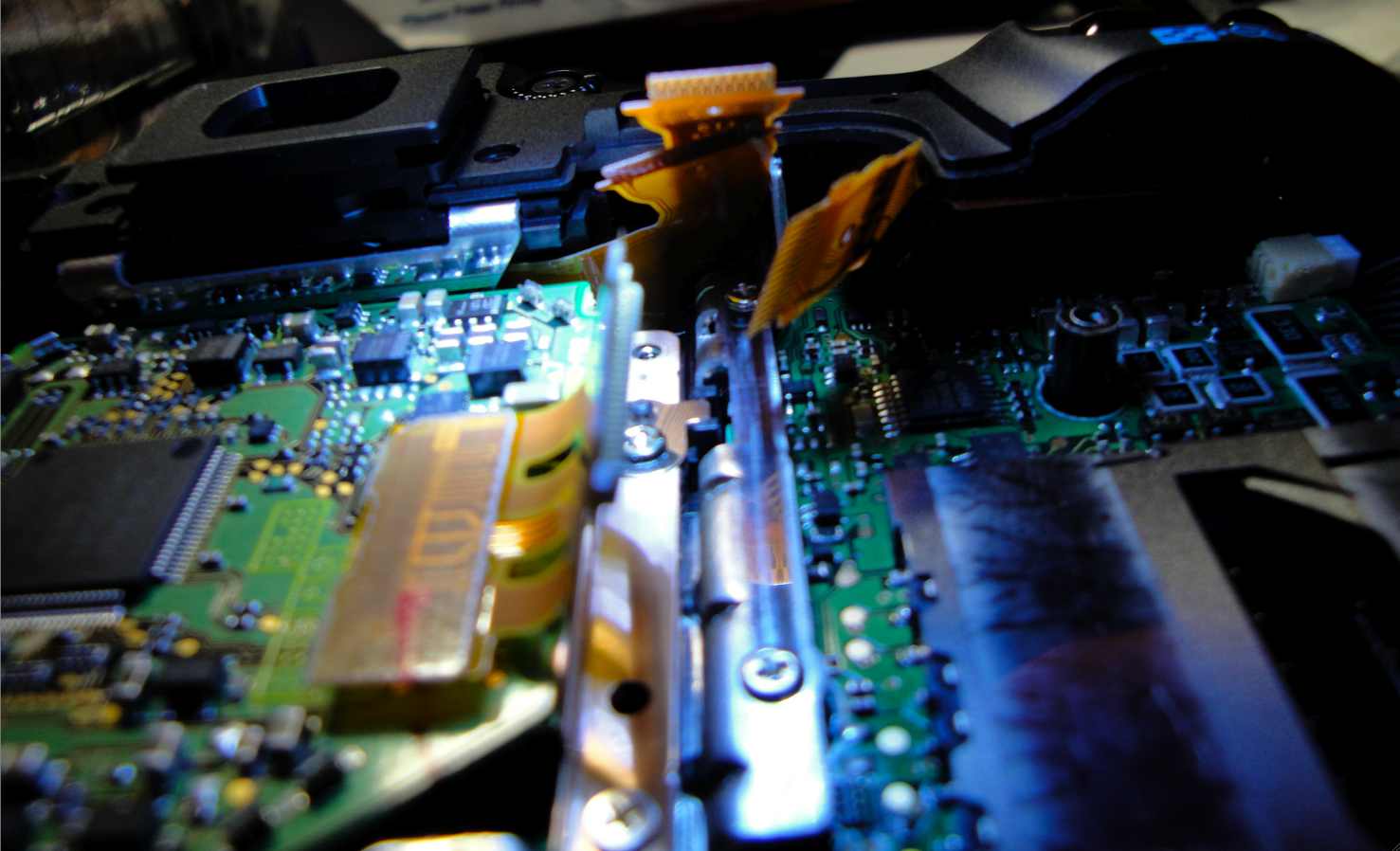 |
Image 5 This side view shows a different view of the detector positioning screw. |
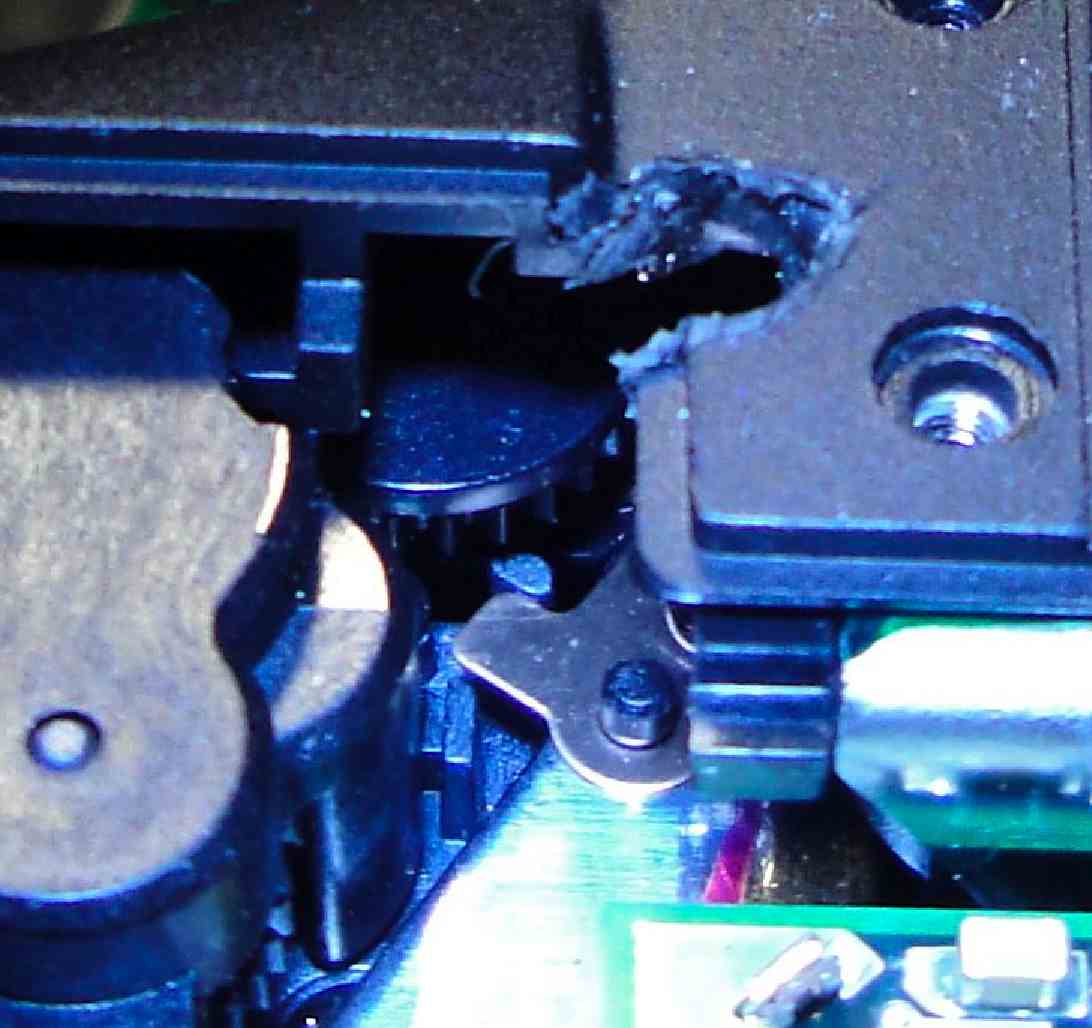 |
Image 6 (Detail) Detailed view of the top positioning screw assembly + hole drilled in the camera case. |
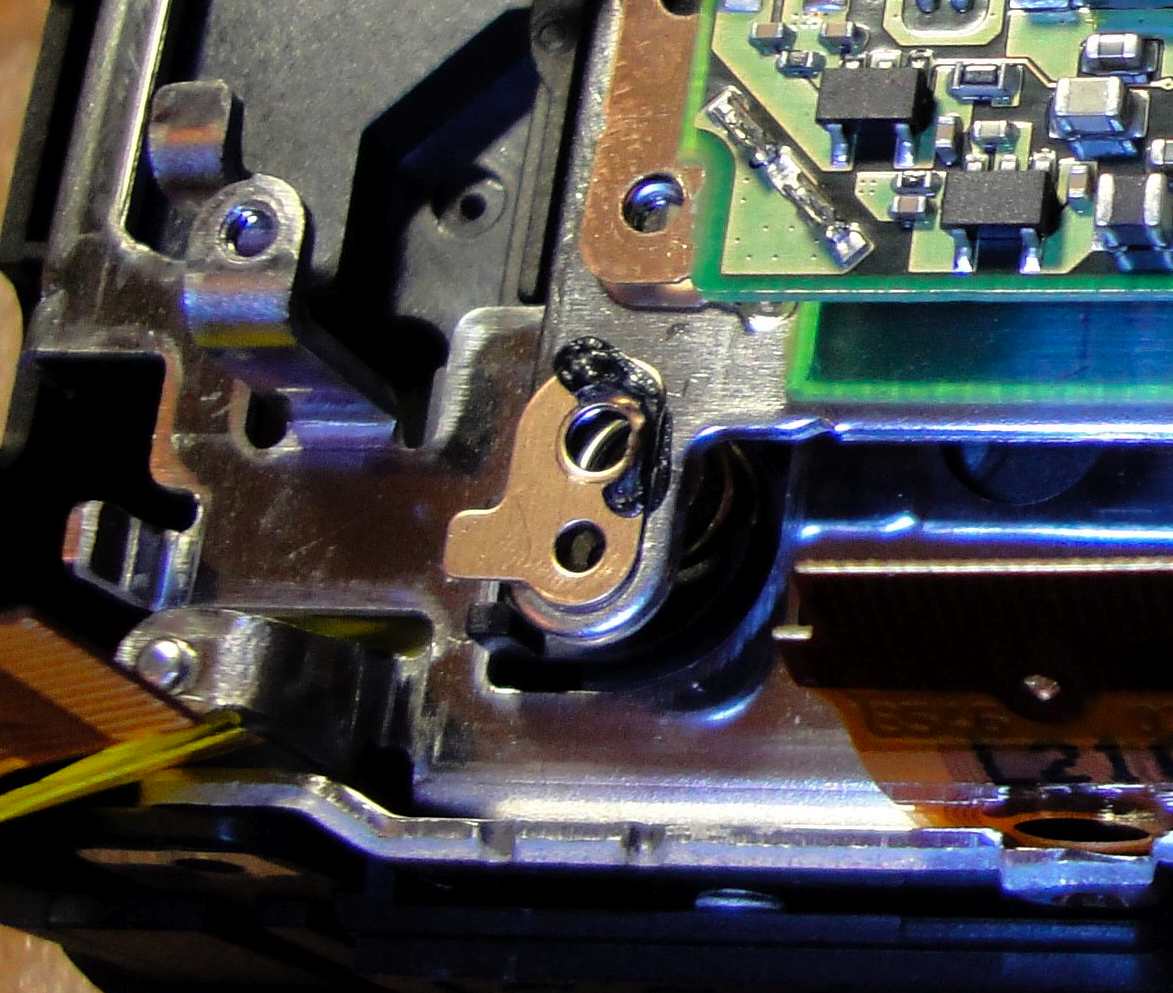 |
Image 7 (detail) This view shows the lower positioning screw location. The screw has been removed, and the spring is visible below the small metal plate. |
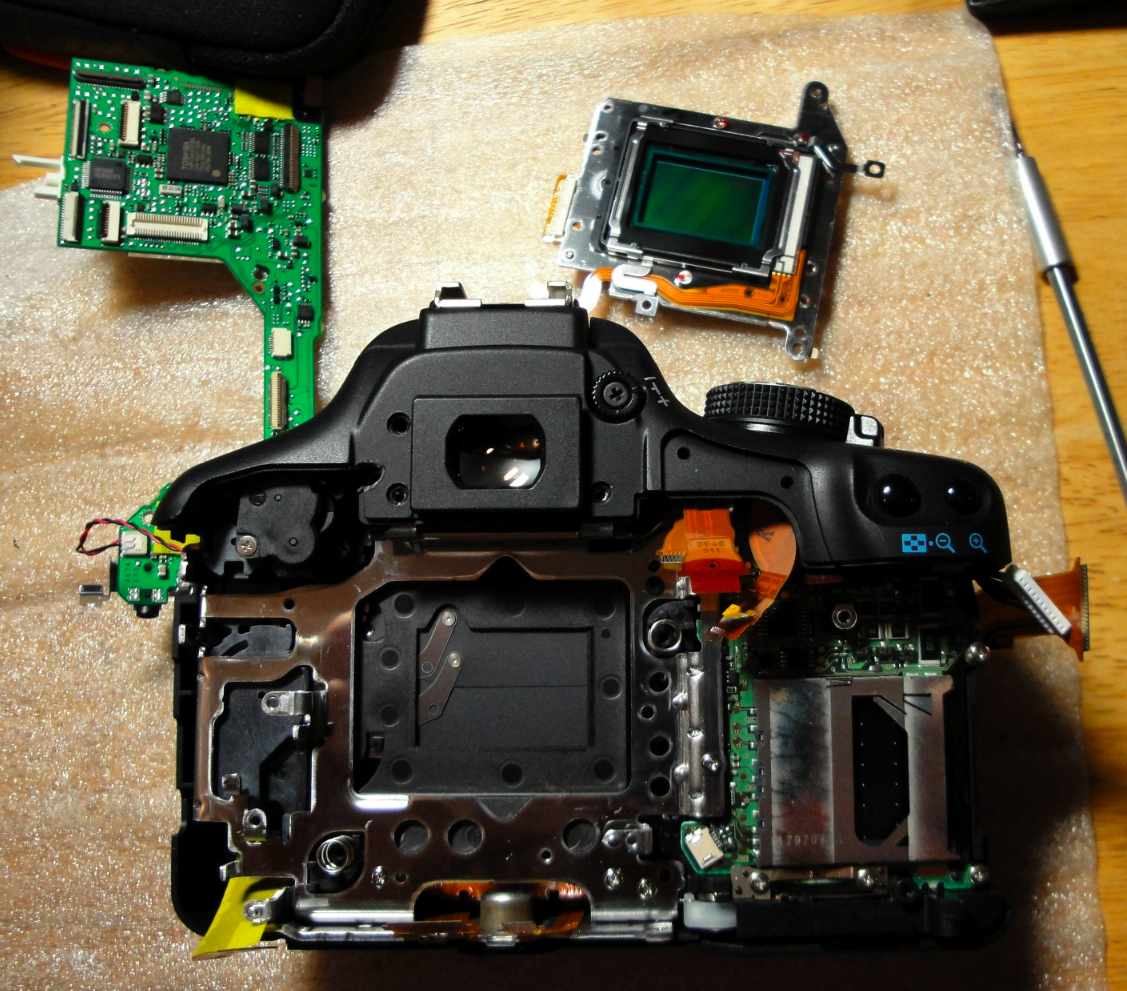 |
Image 8 Detector unit removed from the camera. The detector unit is visible at the top of this image. |
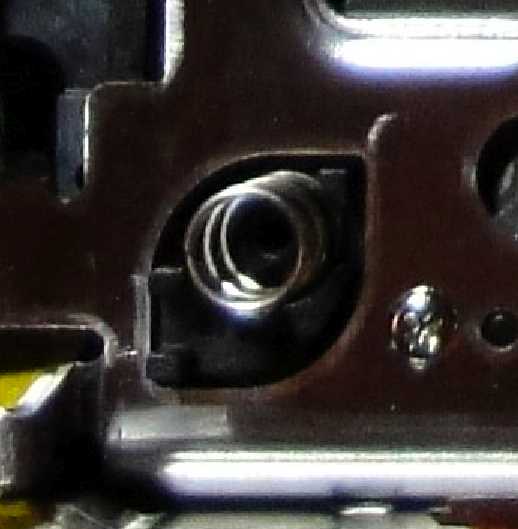 |
Image 8 (detail) This magnified view of the previous image shows the spring for the lower positioning screw. |
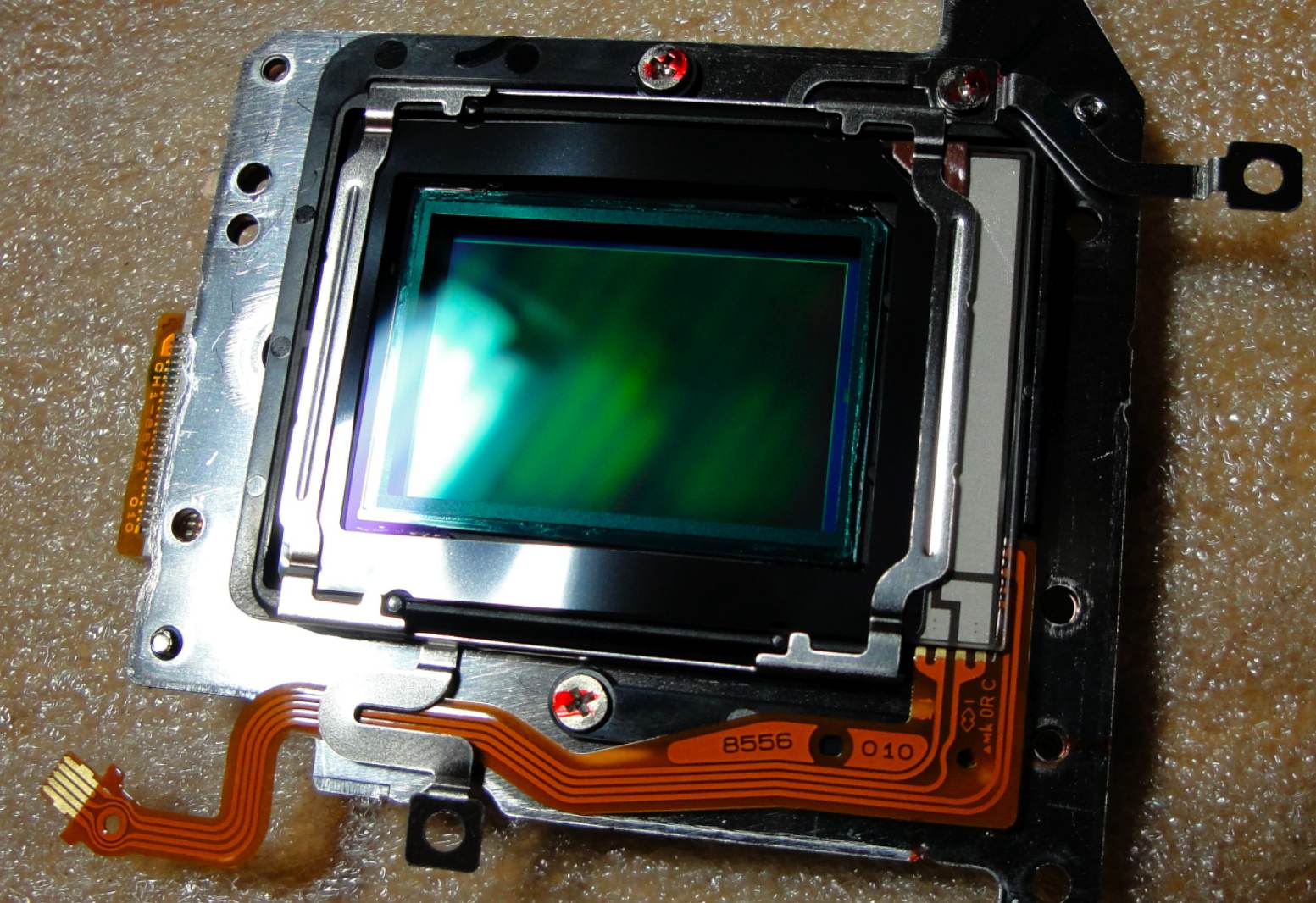 |
Image 9 The detector unit now needs to be disassembled to remove the IR-blocking filter. |
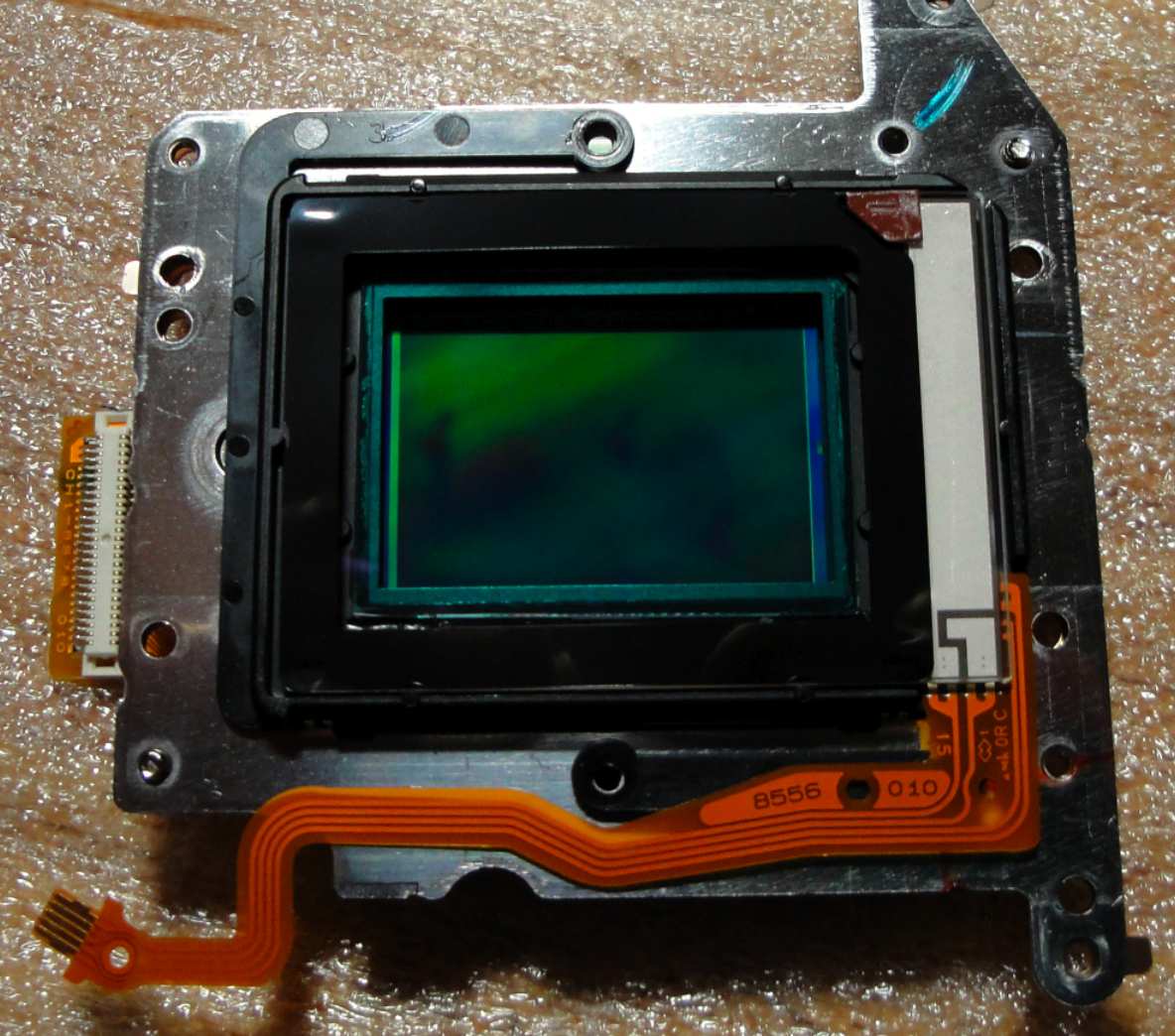 |
Image 10 The first step is to remove the metal frame which is on top of the filter holder. This view shows the detector unit after the frame has been removed. |
 |
Image 11 The filter holder is now removed from the detector unit. The near-IR blocking filter gives the blue color visible in this image. The filter holder also includes the anti-aliasing filter. |
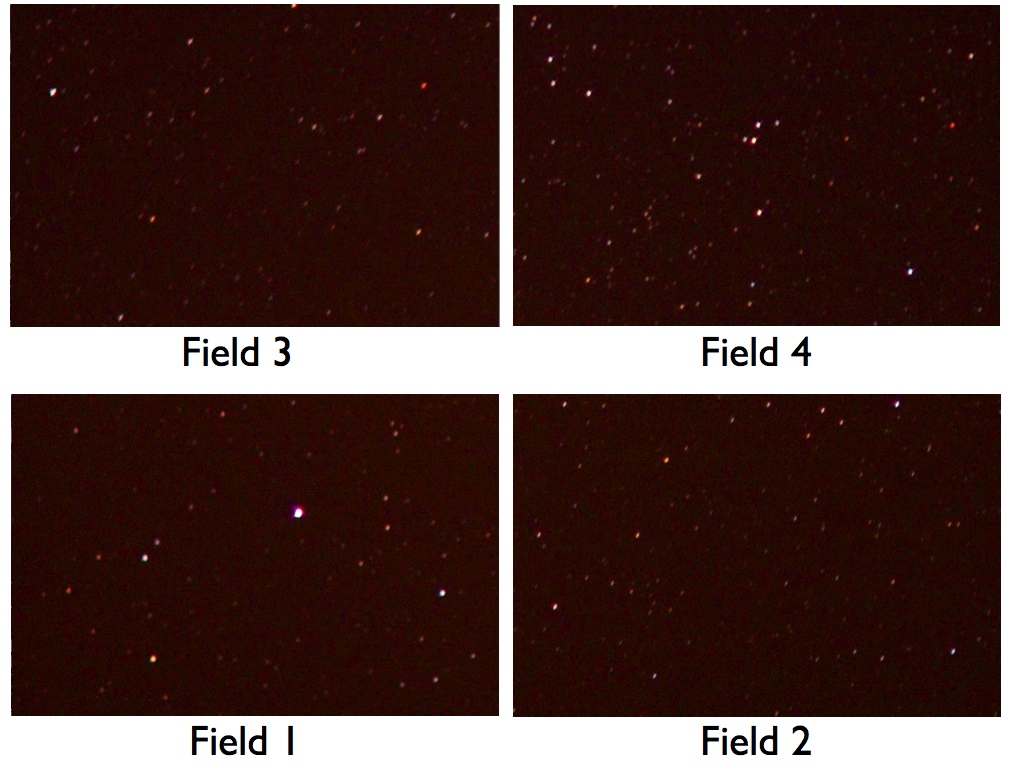 |
Magnified view of the 4 corners of the image Field 2 is quite sharp but the other 3 fields are out of focus (field 1 is especially far from focus). |
 |
Star field image after final detector tip/tilt adjustment |
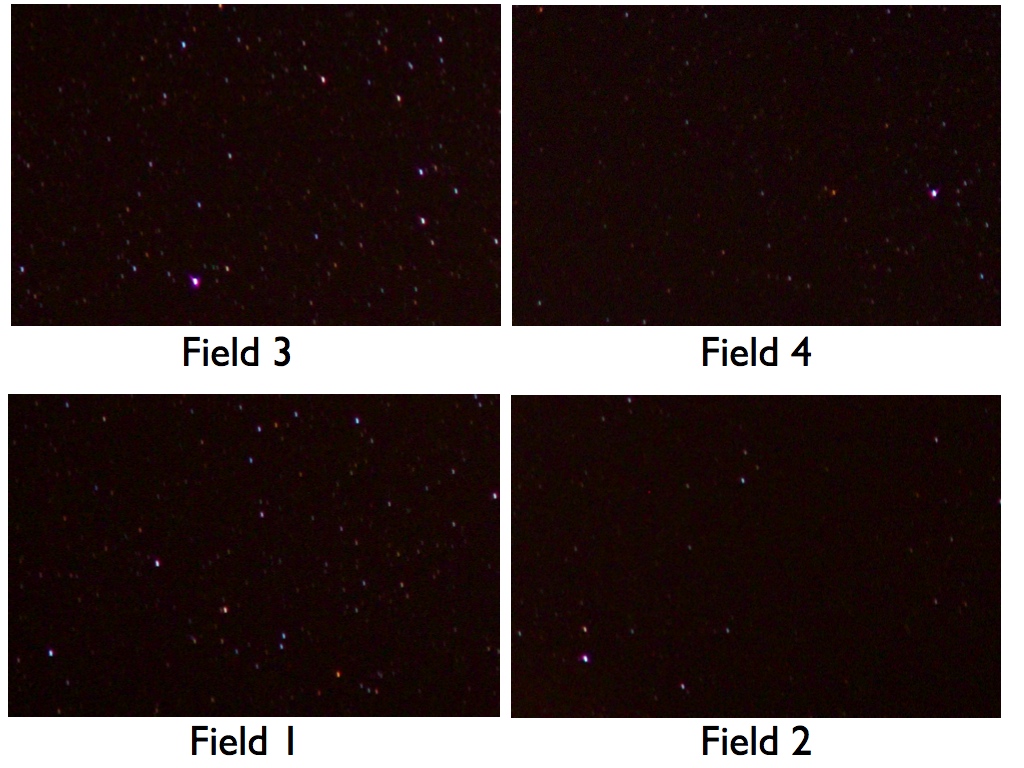 |
Magnified view of the 4 corners The PSF is now sharp (in focus) across the field. |